Doppler speed meter
- Transfer
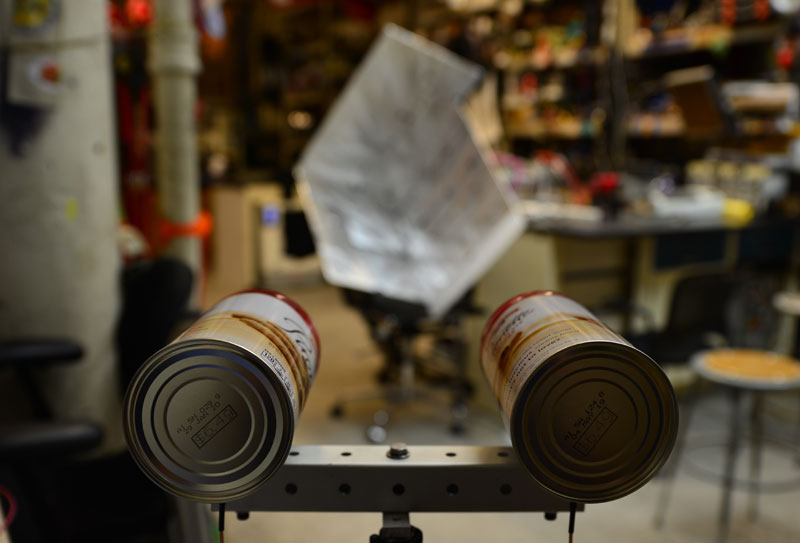
The principles of frequency-modulated radar with a constant carrier frequency are used in interferometry to measure the distance to objects and their speed. This is achieved by transmitting the FM signal and measuring the difference in frequency between the delayed received and transmitted signals. The main focus of this project was on the development and implementation of power divider and mixer circuits. The architecture of the radar is shown below.
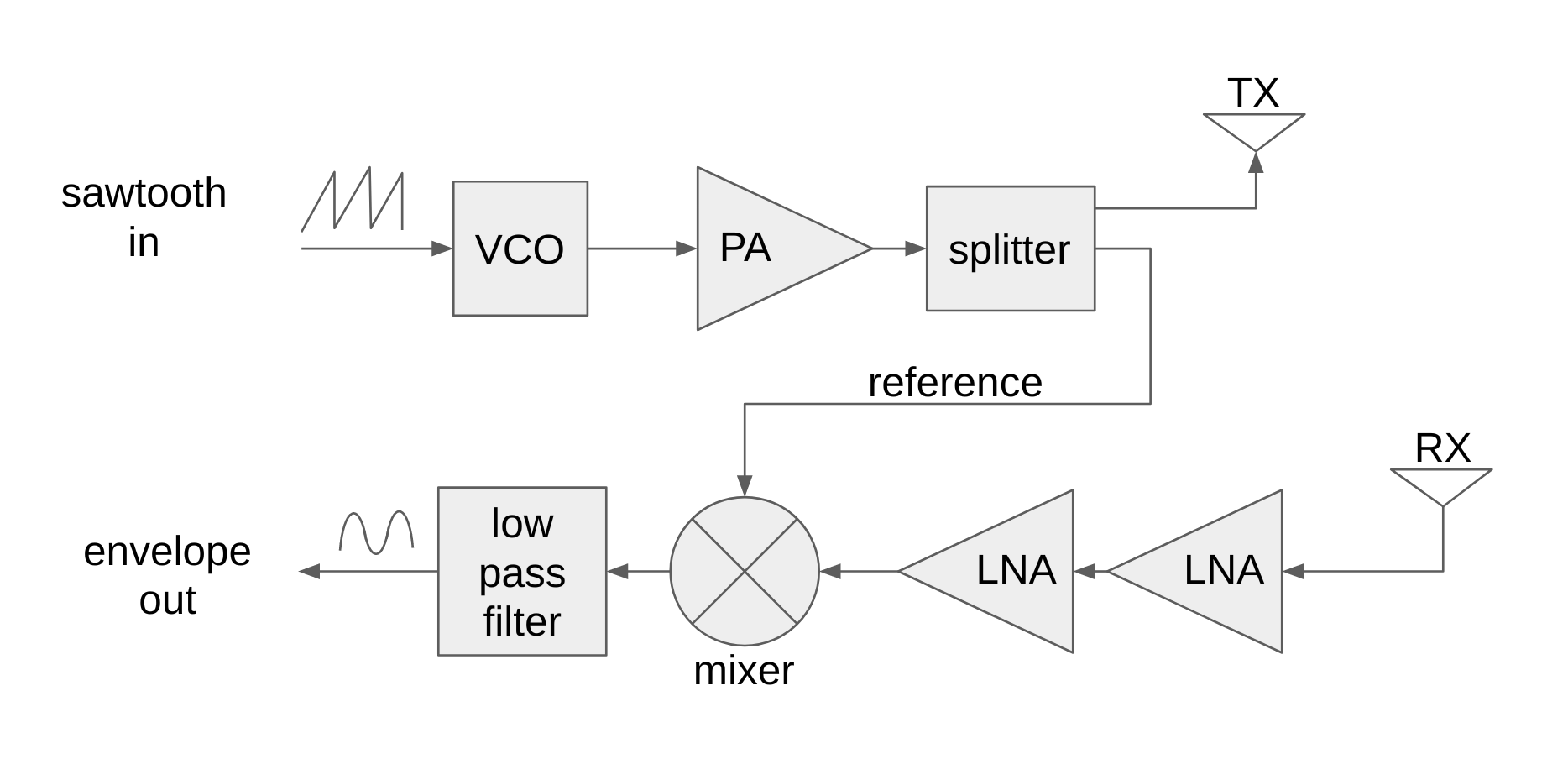
Doppler Radar Architecture
The splitter is a directional coupler with connected copper microstrip lines. When an electric current flows along the microstrip line of the printed circuit board, electric and magnetic fields appear between the microstrip and ground planes on the opposite side of the dielectric substrate. In the center of the microstrip, the electric field is uniform, but towards the edge of the microstrip line it flows outward, propagating through its boundary. This effect allows you to combine the energy of two microstrip lines physically located close to each other. In the case of power taps and splitters, this is very beneficial, and by adjusting the distance between them, you can adjust the amount of energy passing between them to the desired value.
Using Qucs, a universal circuit simulator, the authors calculated the dimensions for the microstrip connector and the microstrip themselves on the printed circuit board. Some of them performed the role of wave impedance transformers 50 Ohms.

The vertical axis is the attenuation in dB, and the horizontal axis is the frequency in Hz.
The blue curve (S11) is the power reflected by the connector minimized around the fundamental frequency of the 2.4 GHz radar. The red curve (S13) is the transmitted power connected through a coupler, -12 dB corresponds to about 6% of the power. Almost all power is transmitted as shown by the pink curve (S12).
The authors fabricated a prototype on a substrate of FR-1 microwave fiberglass and measured the scattering parameters using a network analyzer. The prototype is shown below.
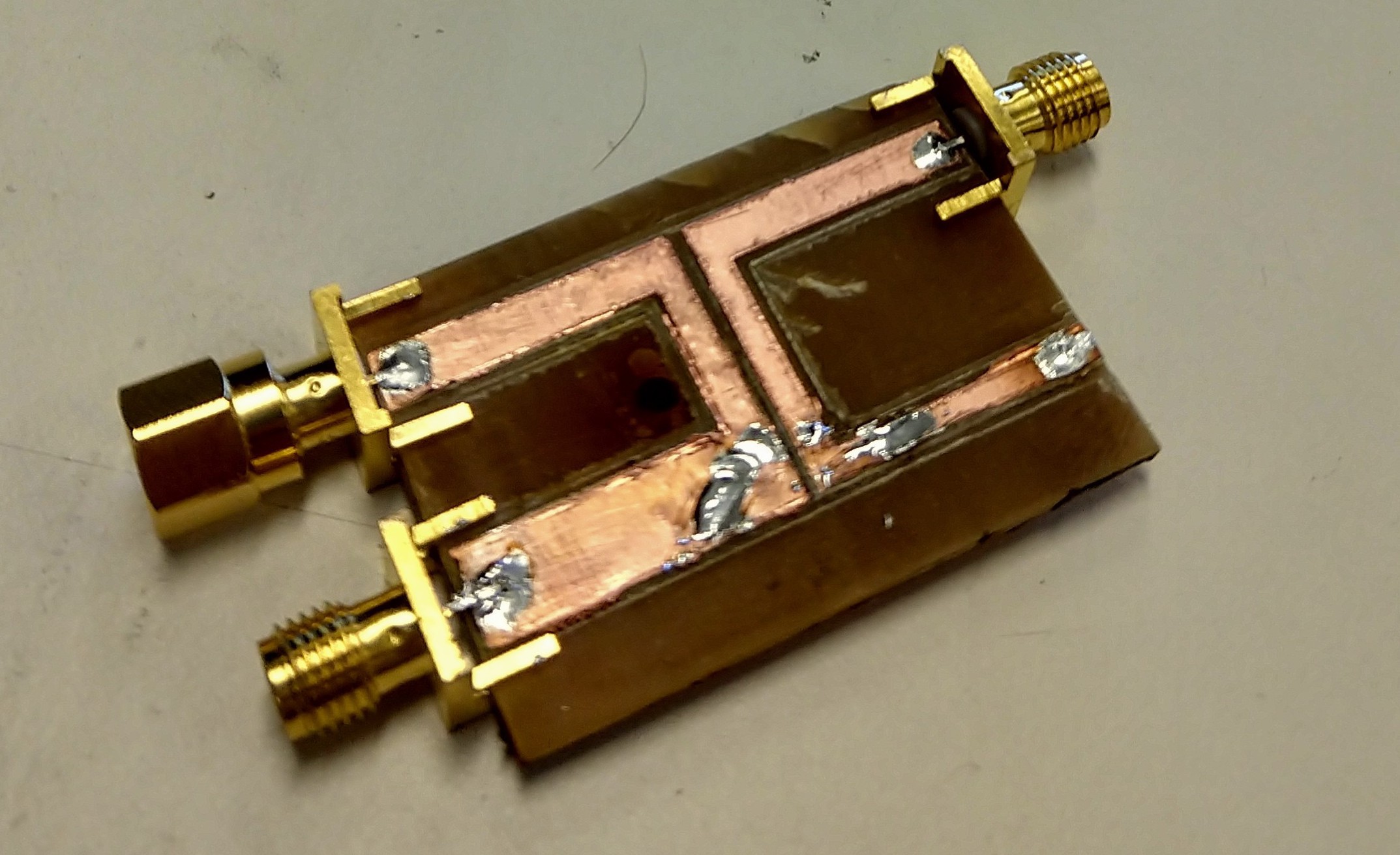
Splitter prototype
The created prototype was not precisely tuned to a frequency of 2.4 GHz and had a rather high reflection coefficient (-10 dB), however, the power coupling (-17 dB) and transmission (-7 dB) were very decent. Part of the losses was obviously determined by the weak connection between the SMA and PCB connectors.
The mixer circuit consists of a summing mixer and an RC circuit of a half-wave rectifier to isolate the envelope. The summing mixer is a Wilkinson power combiner that has excellent port isolation property, the two input ports (on the right in the figure) are divided into half-waves (1.2 GHz) through the combiner and resistor.
The prototype shown below was also made from the same FR-1 microwave fiberglass. And somehow it turned out to be much more aesthetic than the splitter above, the signal attenuation reached -25 dB at a frequency of 2.4 GHz, the maximum signal attenuation of about -35 dB was observed closer to a frequency of 3.5 GHz, which indicates that the loop length was physically too small for the properties of our prototype, it turned out to be not quite equal to a quarter of the wavelength at a frequency of 2.4 GHz.
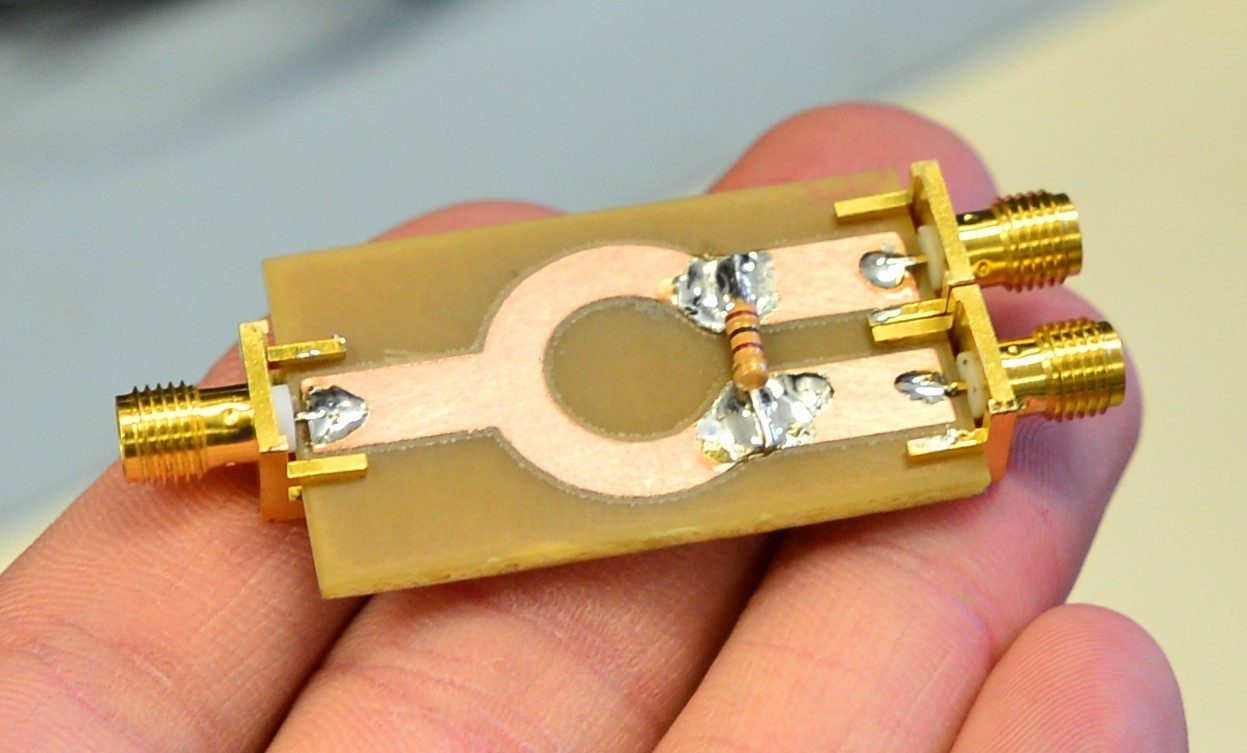
Mixer prototype
After testing the prototypes, the authors developed a board that combines all the modules shown above in the structural diagram. The board was etched on a FR-4 fiberglass substrate, which has approximately the same relative permittivity as FR-1.
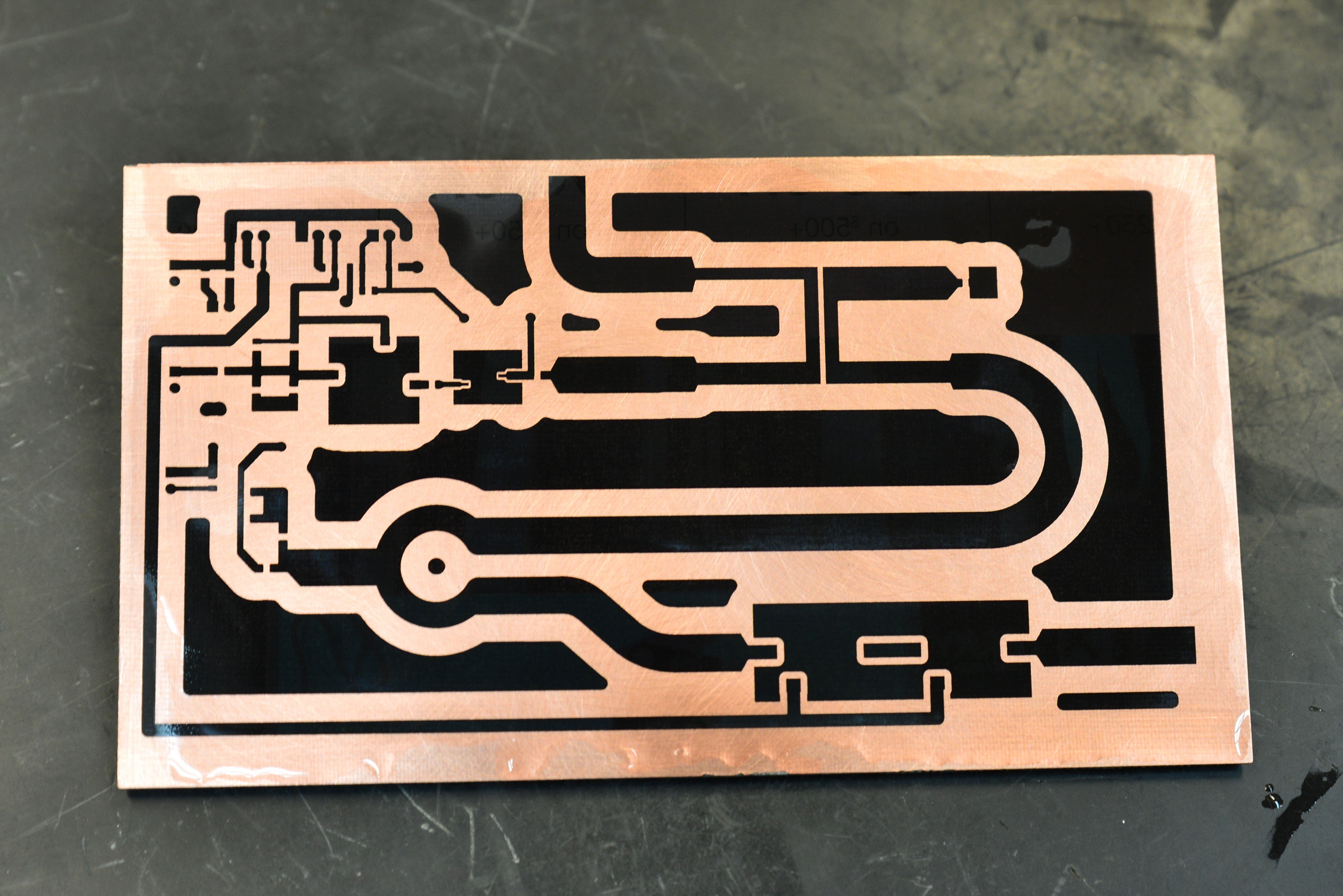
Image of the board after etching with toner
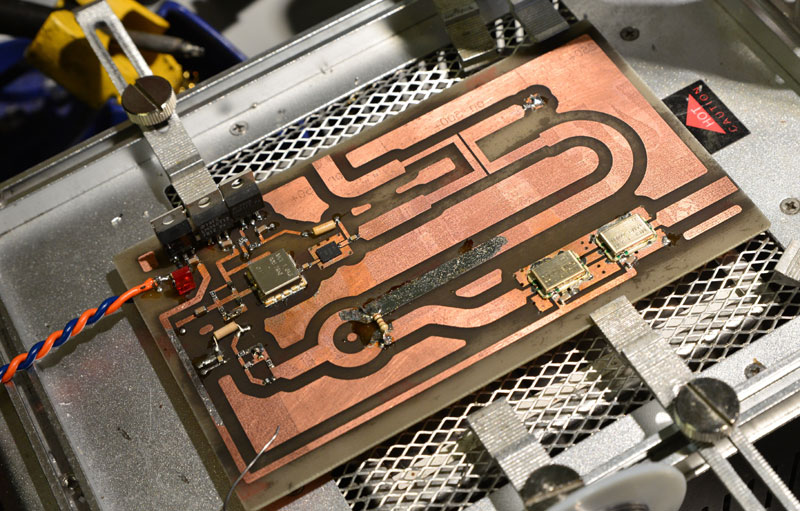
Hot air refinement to remove toner
When the authors finally finished installing the board and connected it to a functional generator that supplies the tuning voltage to the VCO and to an oscilloscope that measures the voltage at the output of the mixer, they could not measure any beat tone, even with highly reflective metal corner "cube" (shown below).

Corner "cube" to reflect the wave
Ultimately, after checking almost all possible modulation frequencies and placing the board in the shielding box, it was found that the movement of the reflector led to a runout with a frequency directly proportional to the speed of the reflector.
This result confirmed that the power divider and mixer worked, so the Doppler radar was designed. A moving reflector creates a Doppler shift, so that the received signal has a frequency different from the transmitted signal, which the authors were able to measure using a mixer.
